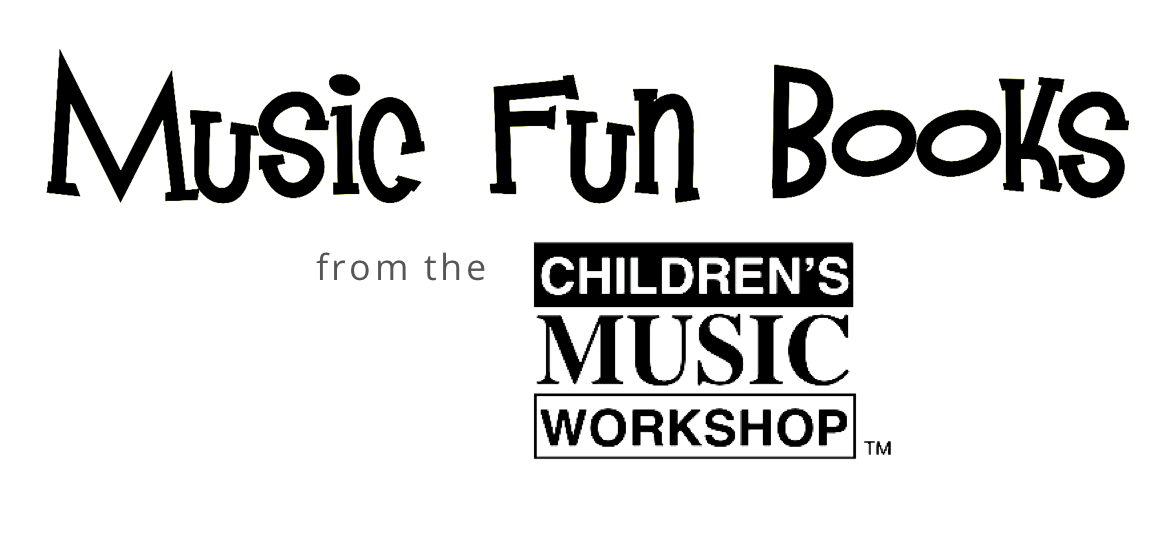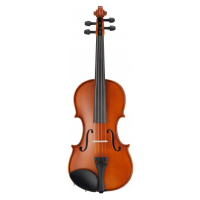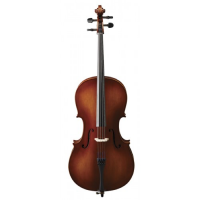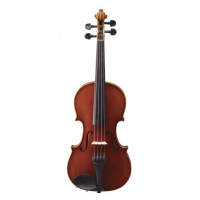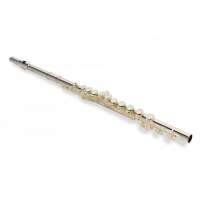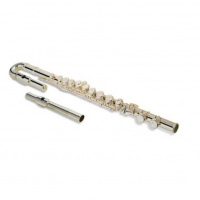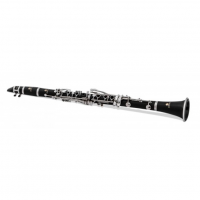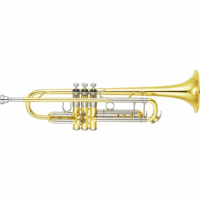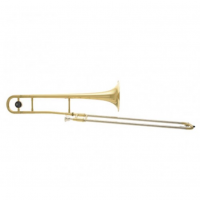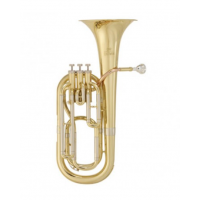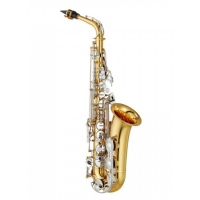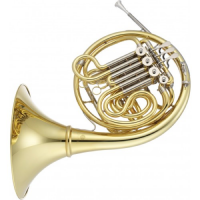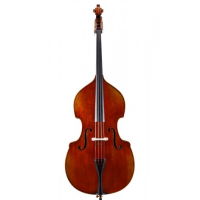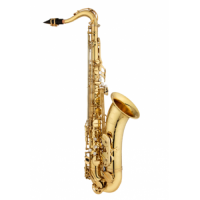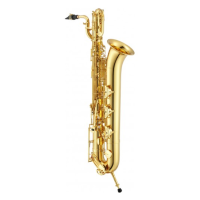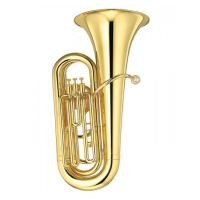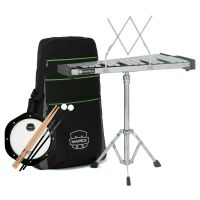Parts of the Flute
The flute is a woodwind instrument that is celebrated for its gorgeous, sweet tone. It also has a compact shape and size that make traveling to practice and performances a snap. The flute's structure is simple: a graceful metal tube open on one end with holes arranged along its sides. Using small keys moved by the fingers, these holes can be alternatively covered or uncovered to create different notes and tones.
The flute is not made of one continuous piece of metal; it is divided into three sections called joints. These three are the head joint, the middle joint and the foot joint. These pieces are connected by thinner metal tubes called tenons.
Modern flutes are classified by the way in which the flute is positioned while playing and the pitch range of the flute. A flute could be side-blown (the most common type seen in orchestras), rim-blown and end-blown. The different types of pitch include: concert flutes in C, soprano flutes in E flat, treble flutes in G, bass flutes in C, alto flutes in G and tenor flutes in B flat. The alto and tenor flutes date back to the nineteenth century and medieval times respectively, but the concept of the flute actually goes back to pre-history.
Flutes range widely in cost, with a major factor being the kind of metal the flute is crafted from. Nickel-silver, silver and gold are commonly used in flutes. Even solid platinum flutes exist for a select few!
To be the best you can be at playing the flute, you should know all of the usual names of the parts of the flute and what function they perform. You should also know how individual flute parts can be removed and replaced, how flute parts should be serviced and maintained and what to do if you think a part of your student flute is damaged or broken.
Let's learn about the anatomy of a typical flute from end to end. If you'd like to jump ahead, use the anatomy chart above to click a part you'd like to read about first.
WHAT IS THE BARREL?
A small decorative fluted area along the flute's middle joint that usually carries the manufacturer's engraved logo.
The flute barrel is a small fluted area at the top end of the middle joint of the flute that somewhat resembles a barrel. It serves no acoustic purpose, but helps to balance the flute's looks and usually carries the logo of the maker of the flute engraved on its surface.
Click to return to anatomy chart
WHAT IS THE CROWN?
The crown caps the end of the flute near the embouchure hole, directing sound down the flute past the key holes.
The flute's crown is a small cap that screws into one end of the flute's head joint. Flute crowns are made in a myriad of shapes from a wide range of materials: silver, silver-plate, zirconium, rhodium and even gold. Despite their small size, the acoustic qualities of individual crowns can make a considerable difference in the tone of the flute.
Click to return to anatomy chart
WHAT IS THE EMBOUCHURE HOLE?
A small hole in the head joint of the flute where air blown by the player enters the flute.
The embouchure hole is a small hole in the head joint of the flute, found in the center of the lip plate. To produce sound from the flute, the player places the flute on the lips and blows air from pursed lips across the embouchure hole. Think of how a bottle sounds when you blow a stream of air across the neck and how the resonance of the sound will change markedly or disappear altogether if there is the slightest change in air stream angle. Achieving the exactly correct angle, air pressure and mouth shape to deliver a stable, consistent tone on a flute can be a tricky task at first, but it will soon become second nature.
The larger the embouchure hole, the larger the sound from the flute, while smaller holes tend to sweeten the tone. The hole will vary in shape as well as size, and could be round, oval, rectangular and everything in between.
Click to return to anatomy chart
WHAT IS THE FOOT JOINT?
The foot joint is the last of the three sections of the flute.
The foot joint is where sound emits from the flute. It is a short section that has a small number of keys, depending on the type of flute. You can count the keys on this joint to see if it is a B foot (3 keys) or C foot (2 keys) instrument. B foots have one extra key that allows the player to play one step lower than a C foot. Generally, flutes with a B foot joint are intermediate level and above while flutes with a C foot joint are student level. B foots are heavier than C foots.
The tenons of your flute are designed to fit precisely into the adjoining joint and should not be lubricated. Make sure the parts of the flute are aligned exactly as designed when reassembling the instrument.
Click to return to anatomy chart
WHAT IS THE HEAD JOINT?
The head joint is the first of the three sections of the flute.
The head joint is where the sound of the flute originates as the player blows air into the flute through the embouchure hole (also known as the blow hole or mouth hole). The embouchure hole is in the center of the lip plate (or embouchure plate) that anchors the lips to the flute. One end of the head joint is covered with the crown end, which can be screwed off to facilitate cleaning. The other is open to accept the tenon on the middle joint.
Inside the head joint is found a small apparatus made of a piece of cork with silver discs or rubber o-rings on either end. This head joint cork is used to tune the instrument and is generally positioned 17.3 millimeters from the center of the embouchure hole. It should stay in place at all times, though over time it may begin to shift or even come loose depending on the age of the cork and atmospheric conditions. If you notice your head joint cork appears to be loose, or if you detect a muffling of the tone, then you should take it to be serviced right away. The flute cannot be used properly if air leakage is occurring around the cork and your tuning will suffer greatly.
Click to return to anatomy chart
WHAT IS THE MIDDLE JOINT?
The middle joint is the second of the three sections of the flute.
The middle joint or body of the flute is in the center of the assembled instrument. On the head side, it has the barrel, a small decorative fluting area that usually carries the engraved logo of the flute maker. On the foot side, it is open to accept the connection with the foot joint. Most of the keys on the flute are found on the body joint, along with the tuning slide and tenons.
Click to return to anatomy chart
WHAT ARE THE KEYS?
These padded keys cover and uncover holes to change the pitch of the instrument.
Flute keys are small round padded metal covers that are mounted on metal rods, which allow them to alternatively cover and uncover the holes in the sides of the flute when combinations of fingerings are made on the flute. They change the flow of air in the instrument and thereby raise or lower the pitch.
Most of the keys are found on the body joint of the flute. The ones closest to the player are fingered by the left hand, while the ones on and near the foot joint are played by the right hand.
Originally, flutes had only open holes that were covered with the fingers alone. Modern flutes have replaced this with a complicated system of interwoven keys and steel, but some flutes retain some open holes for finger playing only. You'll want to experiment before settling on which style suits you best.
Student players will generally begin with what are called "closed hole" flutes: where the keys completely cover each hole. Open hole flutes are more difficult to master, but they offer a whole additional degree of playing range by adding harmonics to the available choices of tones. Open hole style flutes have keys with holes in the center of the key, so the finger has to completely seal the hole in order to play the key as it would be played by merely pressing down on a closed hole flute. This requires more exacting technique and can be frustrating for the beginner.
When evaluating flutes, you will also face the choice between an inline G or offset G key layout. As you might expect, inline G instruments have many of the keys of the middle joint aligned along one rod, while offset G keys are aligned more in line with the natural position the hand would assume. This makes the offset arrangement easier to master physically for beginning players and a good choice for player who might be experiencing repetitive stress issues from playing.
Historically, offset G flutes were considered to be for students only, while inline G flutes were for intermediate to advanced players. This is not true today. There is no real acoustic difference between the two layouts, but there is some practical advantage to an offset arrangement. Since the offset keys are mounted on a separate rod, they are more resistant to damage and need less servicing.
Click to return to anatomy chart
WHAT IS THE LIP PLATE?
The lip plate is a resting place for the lower lip while the mouth is directing air into the embouchure hole.
Lip plates are found on the head joint of flutes, appearing as small curved or straight pieces of metal with a hole in the center known as the embouchure hole. Lip plates allow the player to rest the lower lip against the instrument for stability as air is blown into the embouchure hole with the mouth.
The lip plate can be made of a variety of metals, including nickel-silver, silver and gold. The choice of metal will only affect the sound if the metal is used in an area that air passes by directly.








